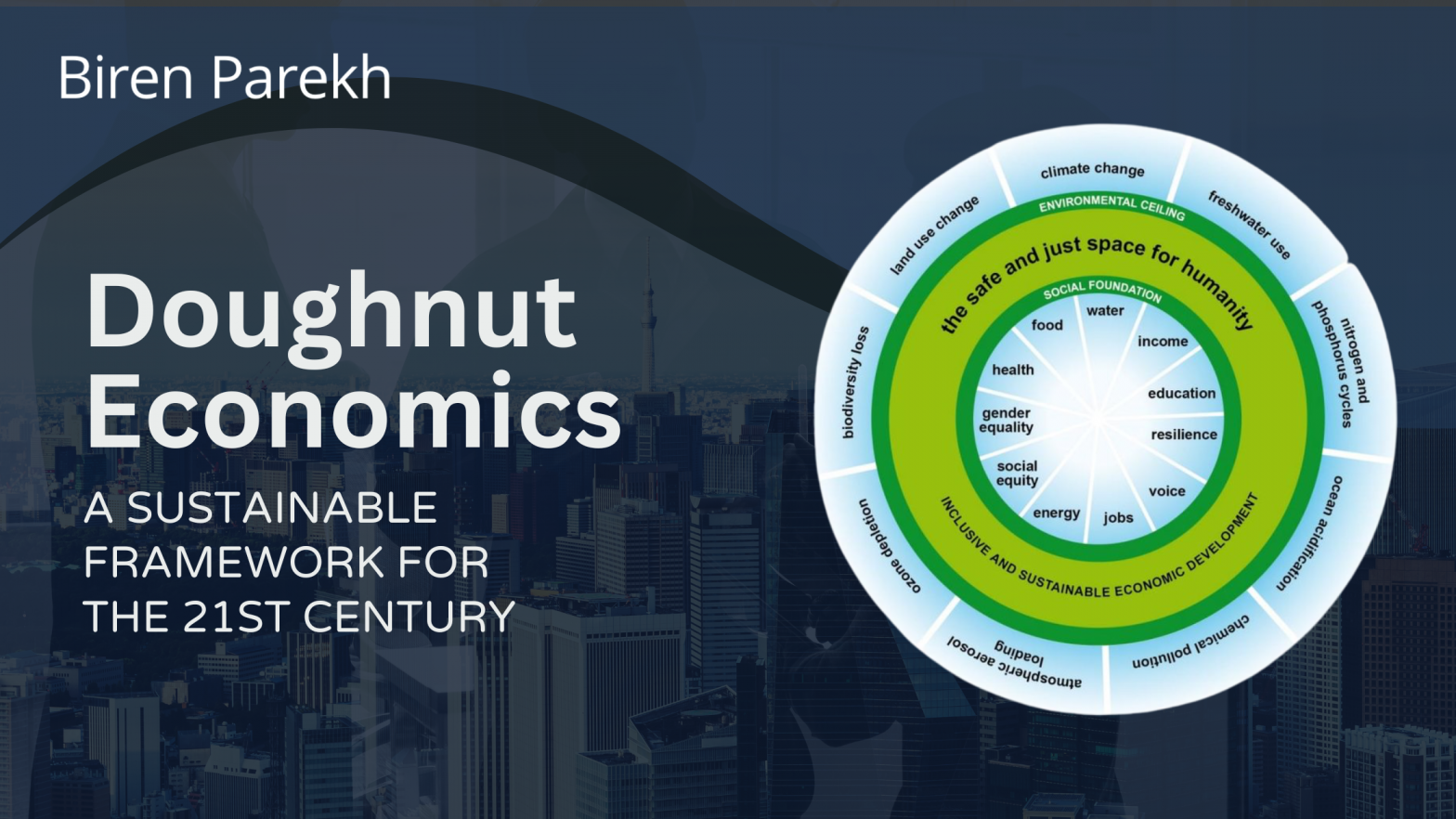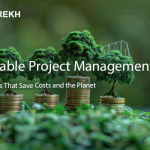Doughnut Economics – A Sustainable Framework for the 21st Century
The 21st century demands an economic system that values both people and the planet, and Doughnut Economics provides a visionary approach to achieving this balance. Instead of focusing solely on GDP growth, this framework emphasizes the balance between human well-being and planetary boundaries. But what exactly is Doughnut Economics, and why is it gaining traction worldwide? Let’s explore in detail.
What is Doughnut Economics?
Doughnut Economics, developed by economist Kate Raworth, is a revolutionary framework for sustainable development. It visualizes the economy as a doughnut-shaped space where humanity can thrive –
- The Inner Ring represents the social foundation of basic human needs, including food, healthcare, education, and housing.
- The Outer Ring represents the ecological ceiling and the environmental limits we must not cross, such as climate change, biodiversity loss, and pollution.
The safe space between these two rings is the “doughnut”, a zone where both people and the planet can flourish.

Why Doughnut Economics Matters Today
Traditional economics often prioritizes growth at any cost. But Doughnut Economics redefines success. It asks – How can we ensure prosperity without overshooting ecological boundaries?
Here’s why it matters:
- Provides a roadmap to balance economic progress with environmental sustainability.
- Highlights the importance of reducing inequality and ensuring basic rights for all.
- Guides policymakers in designing inclusive and resilient strategies.
Key Principles of Doughnut Economics
Kate Raworth outlines seven key principles to rethink economics:
- Change the Goal – Shift from endless GDP growth to thriving within the doughnut.
- See the Big Picture – Recognize the economy as embedded in society and nature.
- Nurture Human Nature – Design economies that foster cooperation, not just competition.
- Get Savvy with Systems – Understand feedback loops and dynamics in economic systems.
- Design to Distribute – Ensure that wealth and resources are shared fairly.
- Create to Regenerate – Promote renewable, sustainable, and circular practices.
- Be Agnostic About Growth – Focus on well-being rather than infinite growth.
By applying these principles, Doughnut Economics creates a pathway to a fairer, greener future.
Traditional Economics vs Doughnut Economics
| Aspect | Traditional Economics | Doughnut Economics |
| Primary Goal | GDP Growth | Thriving within social & ecological boundaries |
| Focus | Efficiency & Profit | Balance of equity, ecology & economy |
| Resource Use | Linear (take-make-dispose) | Circular & Regenerative |
| Social Considerations | Often secondary | Central to the framework |
| Environmental Impact | High & unchecked | Controlled within planetary boundaries |
This comparison shows why Doughnut Economics is becoming a preferred model in sustainable policymaking.
Real-World Applications of Doughnut Economics
Cities and governments are adopting Doughnut Economics in planning. For example:
- Amsterdam – Adopted Doughnut Economics to guide its post-COVID recovery plan, focusing on reducing waste and inequality.
- Costa Rica – Policies are designed to protect biodiversity while improving citizens’ living standards.
- New Zealand – National budgets focus on well-being rather than GDP growth alone.
Benefits of Doughnut Economics
- Balances growth with sustainability.
- Promotes social justice by reducing inequality.
- Encourages circular economies and renewable systems.
- Provides a framework for better policymaking.
Challenges of Doughnut Economics
While promising, Doughnut Economics faces challenges:
- Resistance from traditional economists and industries.
- Difficulties in measuring success beyond GDP.
- Policy implementation at a global scale.
How Businesses Can Adapt to Doughnut Economics
Businesses play a huge role in shifting toward Doughnut Economics. They can:
- Adopt circular economy practices.
- Reduce carbon footprints.
- Focus on employee well-being.
- Integrate sustainability into supply chains.
Forward-thinking companies are already aligning with Doughnut Economics to stay competitive and relevant in the 21st century.






